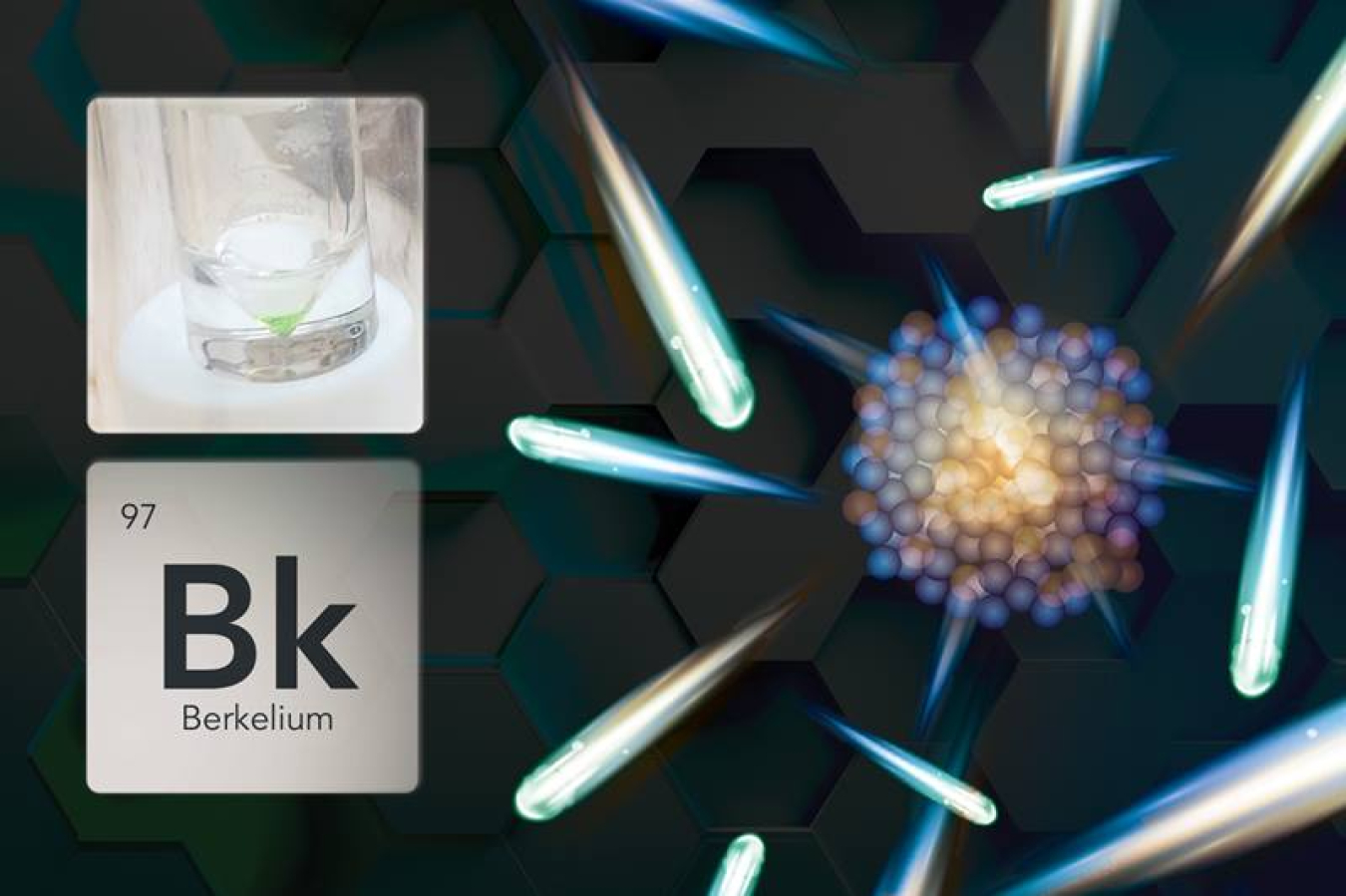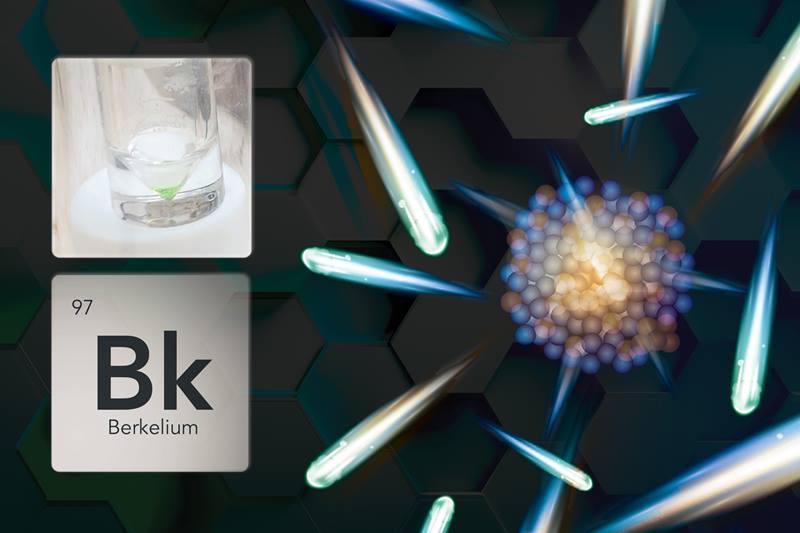
The Science
Researchers need a better way to extract individual heavy metal elements, called actinides, to obtain a purer product. In 2018, researchers discovered that the actinide berkelium, when oxidized, does not form negatively charged ions in solutions of high nitric acid, as other actinides do. This meant an anion exchange column could separate berkelium by absorbing other actinides with negatively charged ions. This system moves berkelium dissolved in highly concentrated nitric acid through a series of columns. The top column blocks negatively charged impurities. The lower column collects berkelium while positively charged impurities pass through. Nitric acid then strips purified berkelium from the lower column. This produced the world’s purest Bk-249 to date.
The Impact
The extraction of individual actinides is essential for improving nuclear fuel recycling and nuclear waste management. This new method is much faster than the previous approach, taking just eight days compared to eight weeks. It is also easier, cleaner, and yields purer product. This could be applied toward the production of heavy actinides. If berkelium’s state allows it to chemically bond, it can be directly extracted from a mixture of other actinides. This is useful when researchers want only berkelium from a complex solution. In addition, this method could be applied to other separations — for example, rare einsteinium and fermium.
Summary
By replacing the original multi-drying-down and multi-column runs with a single dual column run, the new method for purifying berkelium results in historically high radiochemical purity of the finished product — 97.25 percent purity, compared to 93.9 percent for the previous method. The new process also is significantly quicker and simpler, leaving less room for error. Instead of needing sensitive pH adjustments, temperature control and drop counts, the new method achieves the separation of metal ions by easy operations at room temperature.
The first member of the second half of the actinide series, berkelium can be used to learn more about the behavior of heavier elements, whose studies are limited by very short half-lives, very high radioactivity, and very short supply. Currently, berkelium’s primary use is in heavy element research. For example, its most stable isotope, Bk-249, played a significant role in the creation of superheavy element 117, tennessine. A byproduct of californium-252 production at Oak Ridge National Laboratory, Bk-249 was irradiated in a calcium-48 beam by an international research collaboration to create a half-dozen atoms of the element tennessine.
Contact
Miting Du
Oak Ridge National Laboratory
[email protected]
Funding
This research is supported by the Department of Energy (DOE) Isotope Program, managed by the DOE Office of Science for Isotope R&D and Production.
Publications
Miting, D., Applications of a dual-column technique in actinide separations. The Journal of Radioanalytical and Nuclear Chemistry 331, 5343–5357(2022). [DOI: 10.1007/s10967-022-08501-z]
Scraped from https://www.sourcearu.com




